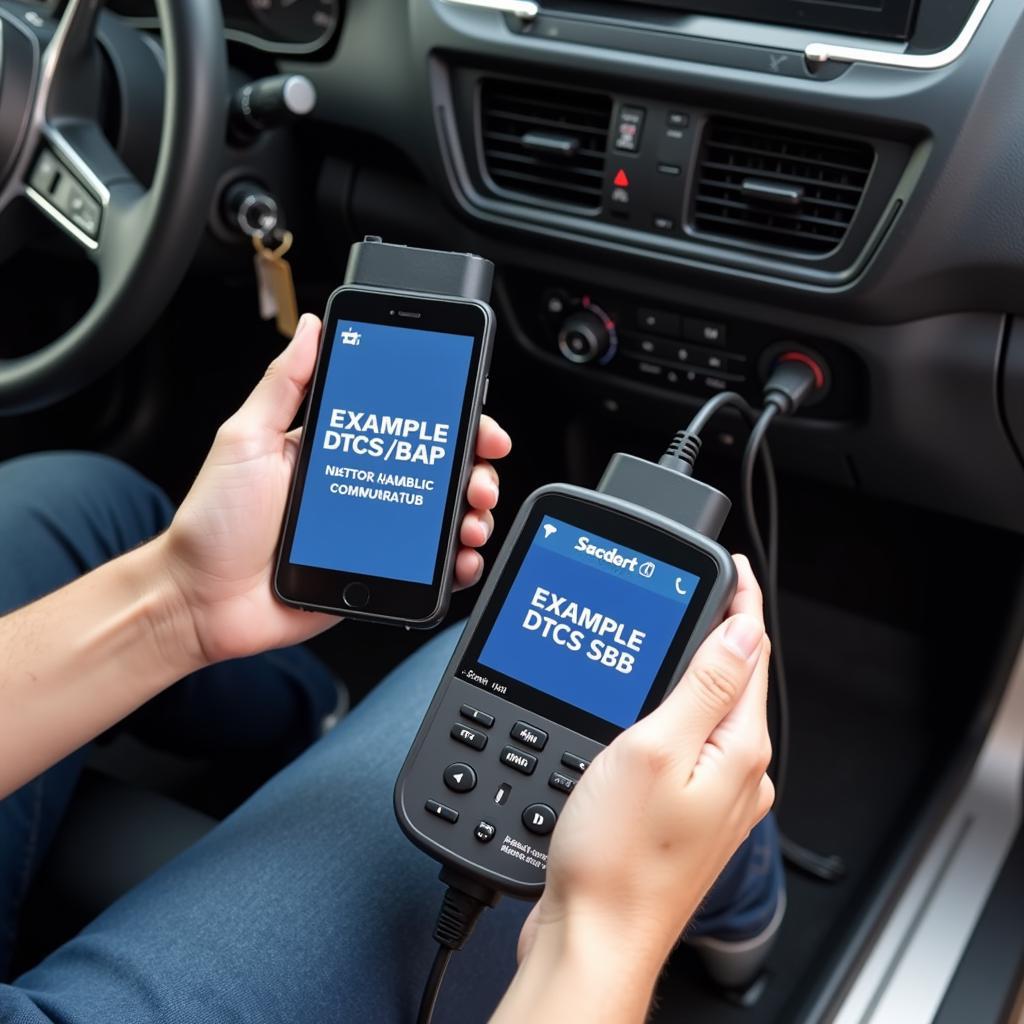A car network problem can be incredibly frustrating, especially when it prevents your engine from starting. You turn the key, and nothing. This article will dive into the common causes of a car network problem that leads to a no-start condition and guide you through some troubleshooting steps and potential solutions.
Understanding the Car Network
Modern vehicles rely on a complex network of interconnected computers, sensors, and actuators, often referred to as the CAN (Controller Area Network) bus. This network allows various components to communicate with each other, sharing vital information for optimal engine performance, safety features, and overall vehicle operation. When this communication breaks down, it can lead to a cascade of issues, including the dreaded “car network problem engine won’t start” scenario.
Common Causes of Car Network Problems Leading to No-Start
Several issues can disrupt the car network and prevent the engine from starting:
- Faulty Battery or Low Voltage: A weak battery or low voltage can disrupt the delicate balance of the car’s electrical system, including the network.
- Damaged Wiring or Connectors: Corrosion, loose connections, or damaged wiring harnesses can interrupt communication between modules.
- Malfunctioning Control Modules: A faulty Engine Control Module (ECM), Body Control Module (BCM), or other control units can wreak havoc on the network.
- Blown Fuses or Relays: These seemingly small components protect the network from power surges. A blown fuse or relay can interrupt the flow of electricity to crucial modules.
- Aftermarket Installations: Incorrectly installed aftermarket accessories can sometimes interfere with the car’s network, causing communication errors.
Troubleshooting Car Network Problems
If you suspect a car network problem is preventing your engine from starting, here are some troubleshooting steps you can take:
- Check the Battery: Start with the basics. Ensure the battery terminals are clean and tight, and the battery voltage is within the correct range.
- Inspect Fuses and Relays: Carefully check the fuses and relays related to the engine and the car network system. Replace any blown fuses or relays.
- Scan for Diagnostic Trouble Codes (DTCs): Use an OBD-II scanner to retrieve any stored DTCs. These codes can provide valuable clues about the source of the problem.
 Using an OBD-II Scanner to Retrieve Diagnostic Trouble Codes Related to a Car Network Problem
Using an OBD-II Scanner to Retrieve Diagnostic Trouble Codes Related to a Car Network Problem
- Visually Inspect Wiring and Connectors: Look for any signs of damage, corrosion, or loose connections in the wiring harnesses and connectors related to the car network.
When to Seek Professional Help
While some car network problems can be addressed with basic troubleshooting, more complex issues often require the expertise of a qualified automotive technician. If you’ve tried the steps above and your engine still won’t start, it’s time to seek professional help.
What a Technician Can Do
A trained technician has access to advanced diagnostic equipment and specialized knowledge to pinpoint the root cause of the network problem. They can:
- Perform Advanced Diagnostics: Use specialized diagnostic tools to delve deeper into the car’s network and identify faulty modules or communication errors.
- Repair or Replace Faulty Components: Repair damaged wiring, replace faulty control modules, or address other hardware issues.
- Reprogram Modules: In some cases, reprogramming or updating the software in control modules may be necessary to resolve the network problem.
“A proper diagnosis is critical when dealing with car network problems. Without the right tools and knowledge, you can easily misdiagnose the issue and waste time and money on unnecessary repairs,” advises John Miller, a seasoned automotive electrical systems specialist with over 20 years of experience. He also adds, “Don’t underestimate the importance of preventative maintenance. Regular checks of your battery, wiring, and connectors can help prevent network problems from developing in the first place.”
Conclusion
A car network problem that prevents your engine from starting can be a complex issue. By understanding the potential causes and following the troubleshooting steps outlined above, you can take the first steps towards getting your car back on the road. However, don’t hesitate to contact a qualified technician for assistance if the problem persists. If you need help, contact us at AutoTipPro at +1 (641) 206-8880 or visit our office at 500 N St Mary’s St, San Antonio, TX 78205, United States. We’re here to help!





Leave a Reply